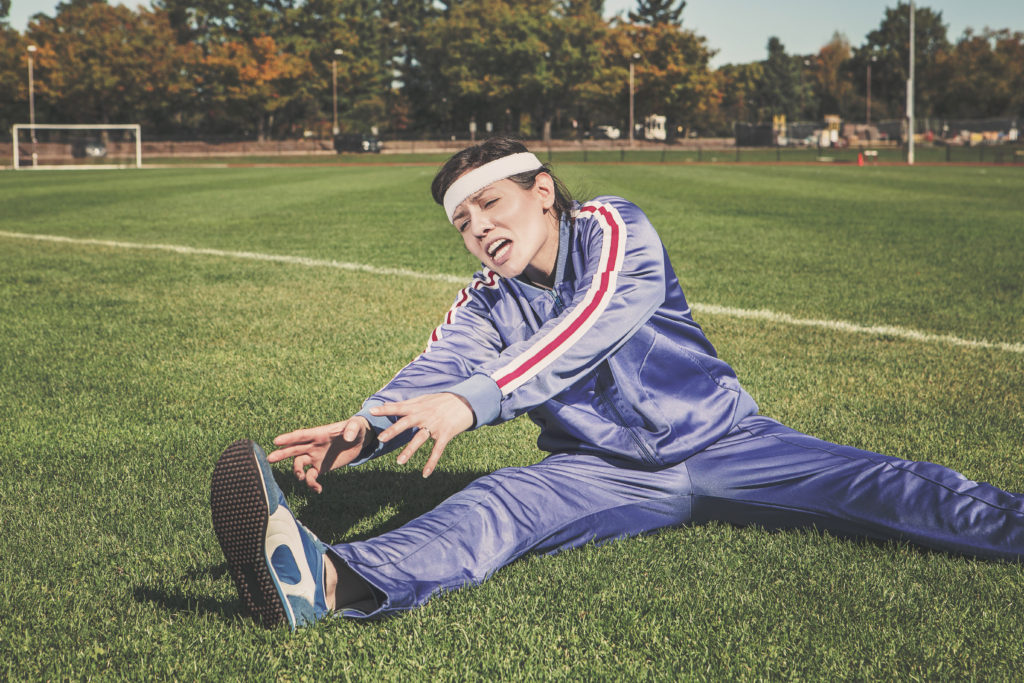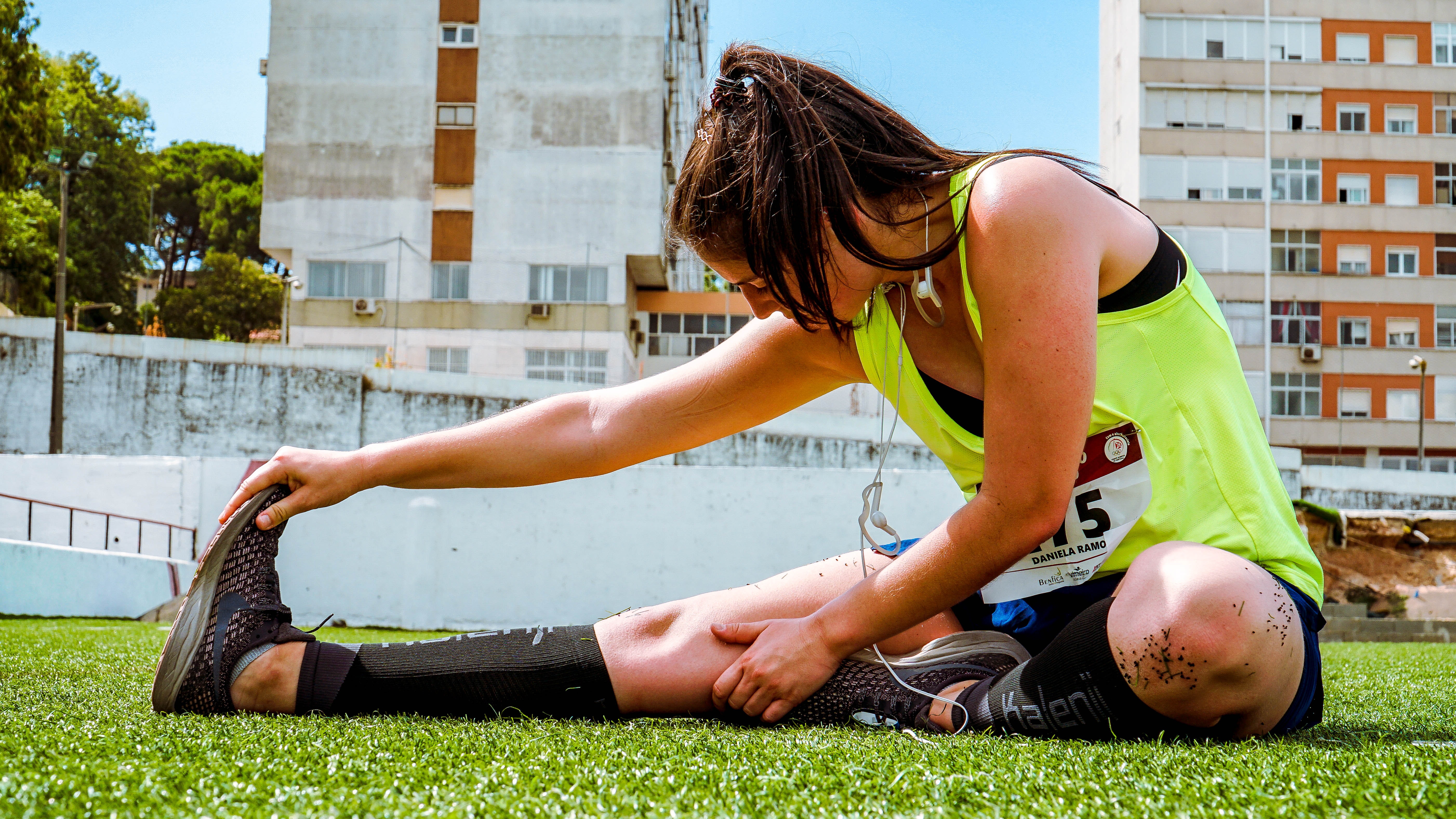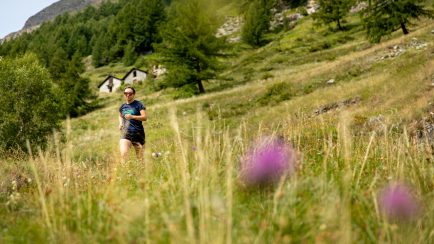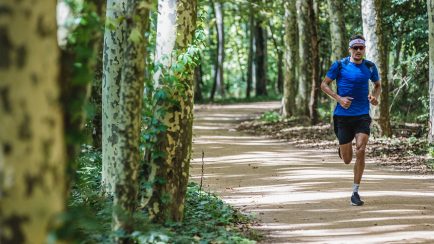If you're a runner then you probably have a very strong love/hate relationship with stretching. More times than not, it hurts and even a simple ankle circle stretch can have your joints sounding like the Snap, Crackle, and Pop brothers. But despite how much you fight it, if you want to keep your running game strong, then buck up and stretch those muscles. Stretching is crucial for runners, no matter what kind of runner you may be. To stay injury-free and to improve your running in general, you've gotta stretch. Experienced runners know to do a few dynamic stretches before a run, which relies on momentum to engage the muscles, rather than holding a stretch for a long period of time. Whereas, post-run is when it's most essential to do static stretches where you hold a stretch for the desired time. There are hundreds of reasons why stretching is important, so check out some of the best stretches for runners.

Note for each stretch
- Pre Run: Hold for no longer than 10 seconds, each side.
- Post-Run: Hold for as long as you need to feel a good stretch
Quad Stretch
The quadriceps are the largest and strongest muscle group in the body. Their main function is to bend and straighten the knee which you naturally do while you run. There are a few different ways to stretch this muscle but the standing quad stretch is great because you can do it anywhere, anytime. Because this muscle group is so big, it takes a bit of a longer hold to really stretch the full muscle.
How To :
- While standing straight, hips forward, bend your knee back by grasping your ankle with one hand.
- Make sure your knee is aligned straight with your hips and that it's not angled outwards away from your body.
- Repeat each side.
- Helpful Tip: For balance, hold onto a chair with the opposite hand that is not holding your ankle.
IT Band Stretch
IT stands for the iliotibial band, a thick tendon that runs on the lateral or outside part of the thigh all the way down to the tibia (shin bone). This tendon can be difficult to stretch but it's so important for mobility and for strength. If your IT band is not properly cared for by stretching or foam rolling, it can have a snowball effect that causes injuries elsewhere. Because the IT band runs all the way down your leg it can cause serious knee, hip, and even ankle pain. Foam rolling this tendon is also great, but go slow and steady because it tends to be a very tight area and can cause discomfort.
How To :
- While standing, cross your left ankle in front of your right.
- Reach your left arm above your head and slowly begin to bend over to your right.
- For support, you can lay your right hand on your right side IT band.
- Repeat each side.
Figure 4 Stretch
This is one of the best stretches for runners. Figure 4 stance works in numerous areas to get a full-body stretch. It targets the hips, lower back, glutes, and the piriformis muscle which are all parts of the largest and most powerful muscle groups in your body. Because all of these areas are used during running it gets a deep stretch to help you run longer and stronger. The piriformis muscle is neglected by many runners because it's a deep layer located in the buttocks near the hip joint and can become inflamed very easily. Runners suffer from hip pain quite frequently and a major cause if directly related to this muscle becomes angry. The figure 4 stretch is the way to go and keep all these areas happy.
How To :
- While standing, hold onto a chair for stability. Lift your right leg from the ankle and gently lay it on your left quad.
- While holding onto the chair, slowly begin to bend your left knee into a squat like position.
- Sit deeply but not enough that your left knee falls forward of your left toes.
- Repeat each side.
Calf Stretch
As runners, calf muscles are like the core of your legs. They play an important role as a major muscle that helps runners accelerate speed or ease you down a hill. Stretching this muscle is essential if you want to increase speed and of course, prevent injuries elsewhere. Maintaining a routine that builds and stretches your calf muscle will only make you a better runner. Stretching the calves is such an easy and simple stretch, you can do it without lifting a finger. These are also a great muscle to foam roll.
How To :
- Simply lift your right foot toes off the ground and place them on the wall.
- Place your left foot back about one foot.
- Lean into the right foot and hold.
Butterfly Stretch
One of the most common injuries found in runners is a pulled groin. The simple act of striding your legs apart during a run can easily pull and pain your groin. The butterfly stretch is great to build the muscles within the groin and help make it stronger to prevent that tear. Because it is a more sensitive muscle, a simple sudden or forced action can overstretch or tear this muscle. This stretch is as easy as 1,2,3.
- Sit on the ground like you're going to sit criss-cross apple sauce.
- Instead of laying one leg over the other, bring your feet together in front of you.
- Drop your knees towards the ground and lean forward.
Frog Stretch
Just as great, if not better than the butterfly stretch for groin pain is the frog stretch. This is a deeper version and gets a good stretch of your entire back too. This pose has a strong pull on the adductors and glute medius muscles that help build the tendons around the knee. And because most runners suffer from knee pain, this is a real winner to prevent any future or further damage.
How To :
- Bend down on the ground and spread your knees apart.
- Your feet should follow your knees expanding
- Place your hands on the ground in front of you and begin to lean forward in between your hands.
- Your head should be in a comfortable position, either on the ground (if you can stretch that deep) or lay a pillow on the ground in between your hands.
- This stretch is best to only do Post-Run.
With all of these stretches, don't forget to breathe deep and not push your muscles past pain. You should feel a smidge of discomfort if your muscles are tight, but never hold a position too long or suffer through deep pain. Overstretching can also cause damage so it's best to find that happy medium spot and hold it till you feel you got in a good stretch. Best of luck out there!





